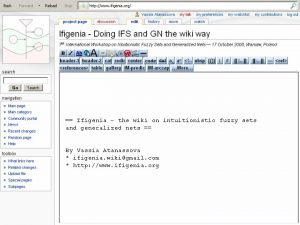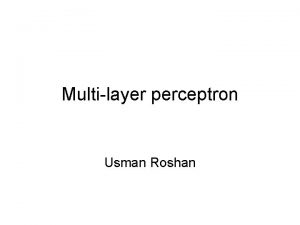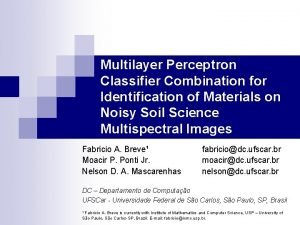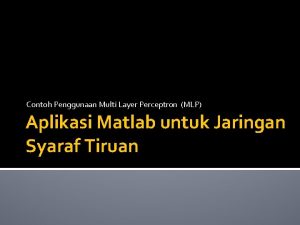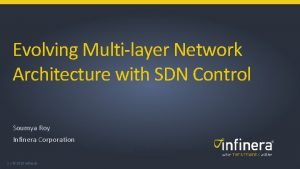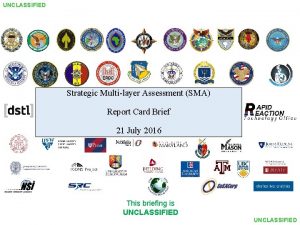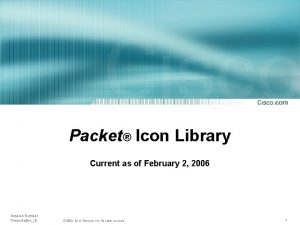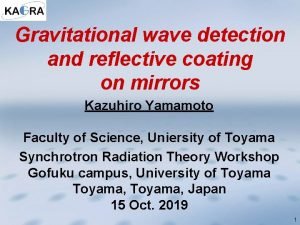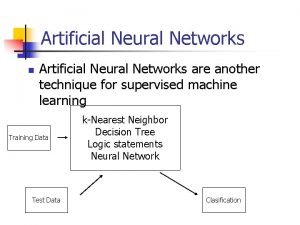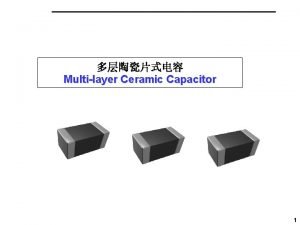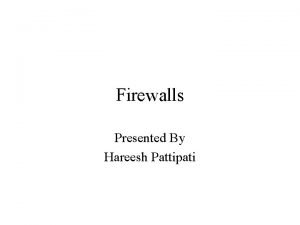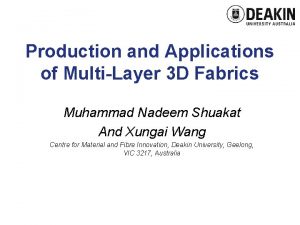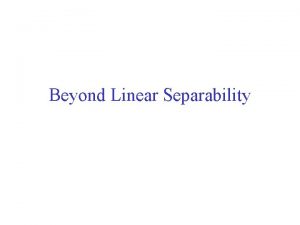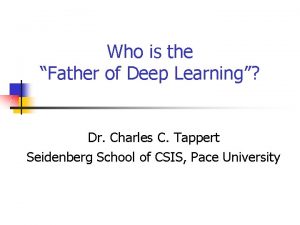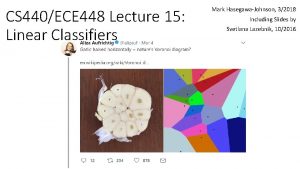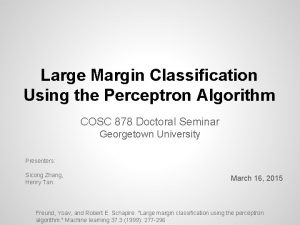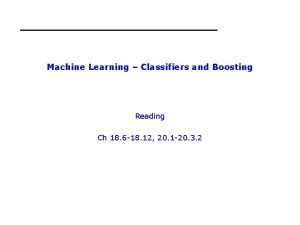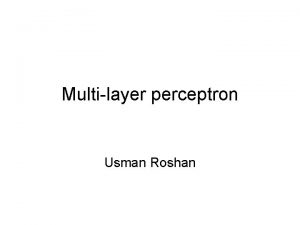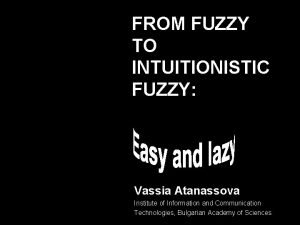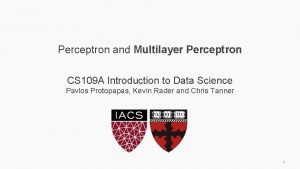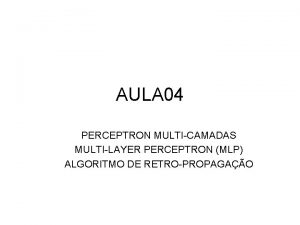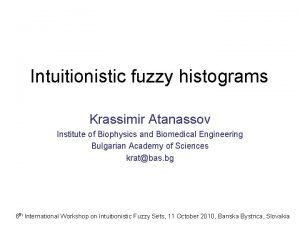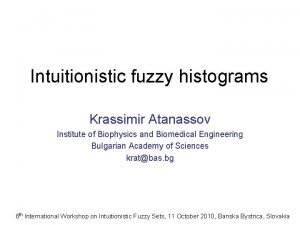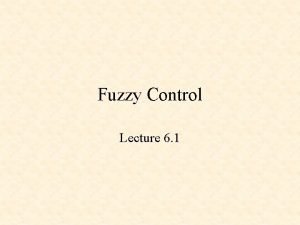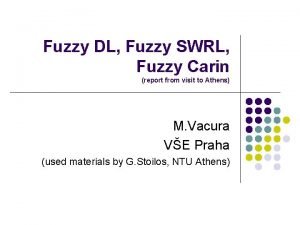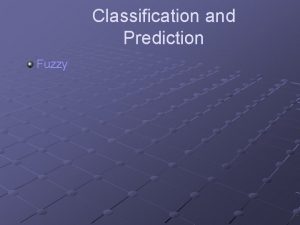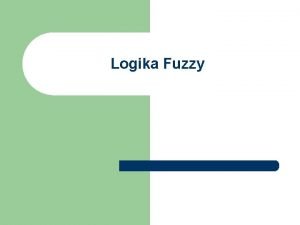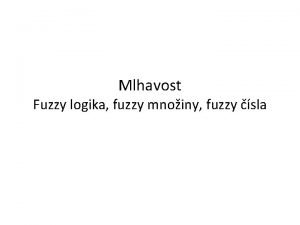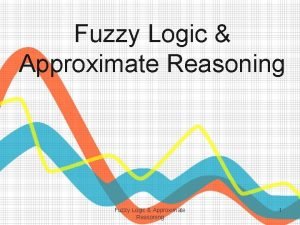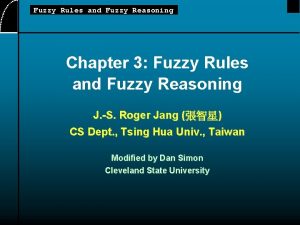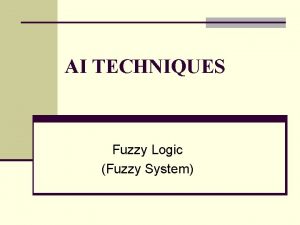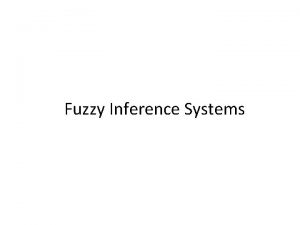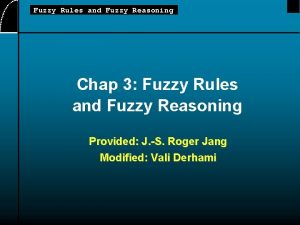INTUITIONISTIC FUZZY MULTILAYER PERCEPTRON AS A PART OF



























- Slides: 27

INTUITIONISTIC FUZZY MULTILAYER PERCEPTRON AS A PART OF INTEGRATED SYSTEMS FOR EARLY FOREST -FIRE DETECTION Sotirov Prof. Asen Zlatarov University, Burgas-8000, Bulgaria ssotirov@btu. bg Ivelina Vardeva Prof. Asen Zlatarov University, Burgas-8000, Bulgaria ivardeva@gmail. com Maciej Krawczak Higher School of Applied Informatics and Management, Warsaw, Poland, e-mail: krawczak@ibs. pan. waw. pl

Introduction Forest-fire detection is a real problem. Early fire detection should be carried out in few seconds or minutes at large. The location of fire with enough resolution is very important.

Introduction Forest-fire detection involves heterogeneous knowledge We will propose intuitionistic fuzzy multilayer perceptron as a part of an integrated system for early forest-fire detection Obtained information from different sources: infrared images, visual images, satellite images, different sensors, Geographic information systems.

Introduction Information sources: Images from infrared cameras and TV cameras Real-time meteorological information from a meteorological station can be used to decrease or to increase the possibility of alarms Information about the terrain slope from the Geographic information systems

Introduction Very often the trigger to fire are fake, so the system is unworkable in the real world; The proposed here intuitionistic fuzzy multilayer perceptron for integrated system for early forest-fire detection uses intuitionistic fuzzy estimation for decreasing of fakes alarms and for increasing of the systems' performance.

Recognition of the fire with IFMLP A flame is a mixture of reacting gases and solids emitting visible, infrared, and sometimes ultraviolet light, the frequency spectrum of which depends on the chemical composition of the burning material and intermediate reaction products.

Recognition of the fire with IFMLP Visual systems encode pixel color values by devoting eight bits to each of the R, G, and B components (we can take this information from framebuffer in computer). RGB information can be either carried directly by the pixel bits themselves, or provided by a separate color.

Recognition of the fire with IFMLP The transformation of the RGB and XYZ: XYZ color space

INTUITIONISTIC FUZZY MLP

INTUITIONISTIC FUZZY MLP

INTUITIONISTIC FUZZY MLP We put on the inputs of the IFMLP values of the XYZ color space that represent different colors. On the inputs p 1, … pn of the neural network there are values from the XYZ color space. Outputs a , a and a obtain intuitionistic fuzzy evaluations. The first output gives the degree of the affiliations of the fire - ; the second - degree of a non affiliations of the fire - , and the third - degree of uncertainty = 1 - -. The estimation reflect of the possibilities to have a fire.

Recognition of the fire with IFMLP The MLP neural network is trained with the XYZ color space values of the pixels that belong to fire regions. The MLP is tested in Matlab. It has a structure 3: 15: 3 (3 inputs; 15 neuron in hidden layer; 3 output neuron in the output layer). The purpose of verification is to protect the neural network from overfitting. In this case we use for training 90% of the input vector, 5 % for verifications and 5 % for testing.

where INTUITIONISTIC FUZZY MLP Initially when still no information has been obtained, all estimations are given initial values of <0, 0>. When k 0, the current (k+1)-st estimation is calculated on the basis of the previous estimations according to the recurrence relation is the previous estimation, and < , > is the estimation of the latest measurement, for m, n [0, 1] and m + n 1. where

GN-Model

GN-Model Z 1 – Work of the image devices; Z 2 – Work of the local meteorological devices; Z 3 – Work of the GPS system; Z 4 – Image processing; Z 5 – Meteorological processing; Z 6 – Work of the Geo Information system; Z 7 – Work of the decision making system.

GN-Model Initially, the tokens , , , and stay in places S 1 A, S 2 A, S 3 A, SIP, SMS, SGIS and SIS with initial and current characteristics: token in place S 1 A: = “Current image devices”, token in place S 2 A: = “Current local meteorological devices”, token in place S 3 A: = “GPS system”, token in place SIP: = “Algorithms and systems for image processing”, token in place SMS: = “Local meteorological station”, token in place SGIS: = “Geo Information system”, token in place SIS: = “Decision makers system”.

GN-Model Z 1 =<{S 1 A, S 71}, { IR, TV, Sat, S 1 A}, R 1, (S 1 A, S 71)>, R 1= The 1 -, 2 - and 3 -tokens that enter places IR, TV and Sat obtain characteristic respectively: = “Information from infrared camera” in place IR, = “Information from TV camera” in place TV, = “Information from satellite” in place Sat.

GN-Model Z 2 =<{S 2 A, S 41}, { t , Hum, Plu-W, S 2 A}, R 2, (S 2 A, S 41)>, R 2= The 1 -, 2 - and 3 -tokens that enter places t , Hum and Plu obtain characteristic respectively: = “Information from thermometer” in place t , = “Information from humidity sensor” in place Hum, = “Information from pluviometer” in place Plu.

GN-Model Z 3 =<{S 3 A, S 42}, { GPS, S 3 A}, R 3, (S 3 A, S 42)>, R 3= The 1 -token that enters place GPS obtain characteristic: = “Information from satellite” in place GPS.

GN-Model Z 4 =<{ IR, TV, Sat, SIP, SSTR}, { S 41, S 42, S 43, SIP }, R 4, ( (IR, TV, Sat), SIP, SSTR)>, , R 4= The 4 -, 5 - and 6 -tokens that enter places S 41, S 42 and S 43 obtain characteristic respectively: = “Query for information from local meteorological devices” in place S 41, = “Query for information from satellite” in place S 42, = “Information from image devices” in place S 43.

GN-Model Z 5 =<{ t , Hum, Plu-W, SMS}, { S 51, SMS }, R 5, ( (t , Hum, Plu), SMS)>, R 5= The 4 -token that enters place S 51 obtain characteristic: = “Information from local meteorological devices”.

GN-Model Z 6 =<{ GPS, GIS}, { S 61, GIS }, R 6, (GPS, GIS)>, R 6= The 2 -token that enters place S 61 obtain characteristic: = “Information from satellite”.

GN-Model Z 7 =<{ S 43, S 51, S 61, SIS}, { S 71, S 72, S 73, SIS }, R 7, ( (S 43, S 51, S 61), SIS)>, R 7= From place Sint 0 -token enters the net with characteristic = “New decision making system”. The 1 -, 2 - and 3 -tokens that enter places S 71, S 72 and S 73 obtain characteristic respectively: = “Query for information from local meteorological devices” in place S 71, = “Query for information from satellite” in place S 72 = “Information from image devices” in place S 73.

Conclusion In this paper was presented intuitionistic fuzzy neural network as a part of generalized net model of multi-sensorial integrated systems for early detection of forest fires. On the inputs of the IFMLP we put intuitionistic fuzzy values taken from the YXZ color space. On the outputs we obtain intuitionistic fuzzy estimations of the possibilities for the real fire. The NN is learned with data that are in spectrum of the fire of XYZ color space

Conclusion The IFMLP is a part from one integrated early forest fire detection system that use many information and data sources- infrared images, visual images, sensors data, and geographic data bases. One of the main purpose is using of the intelligent methods for decision when must alarm starts.

Acknowledgment The authors are grateful for the support provided by the project "Simulation of wild -land fire behavior" funded by the National Science Fund, Bulgarian Ministry of Education, Youth and Science.

Thank you for your attention!
 Wiki
Wiki Non-linear classification
Non-linear classification Bagdt
Bagdt Multilayer perceptron matlab
Multilayer perceptron matlab Image sets
Image sets Multilayer sdn
Multilayer sdn Strategic multilayer assessment
Strategic multilayer assessment Multilayer switch icon
Multilayer switch icon Multilayer mirror
Multilayer mirror Multilayer pcb
Multilayer pcb Multilayer neural network
Multilayer neural network Multi plane
Multi plane Multilayer security architektur
Multilayer security architektur Multilayer architecture
Multilayer architecture Multilayer inspection firewall
Multilayer inspection firewall Bcmsn
Bcmsn Multilayer fabric
Multilayer fabric Limitations of perceptron
Limitations of perceptron Perceptron excel
Perceptron excel Perceptron rosenblatt
Perceptron rosenblatt Frank rosenblatt perceptron
Frank rosenblatt perceptron Perceptron
Perceptron Margin perceptron algorithm
Margin perceptron algorithm Perceptron xor
Perceptron xor Perceptron classifier
Perceptron classifier Difference between adaline and perceptron
Difference between adaline and perceptron In matlab
In matlab Hidden layer perceptron
Hidden layer perceptron
